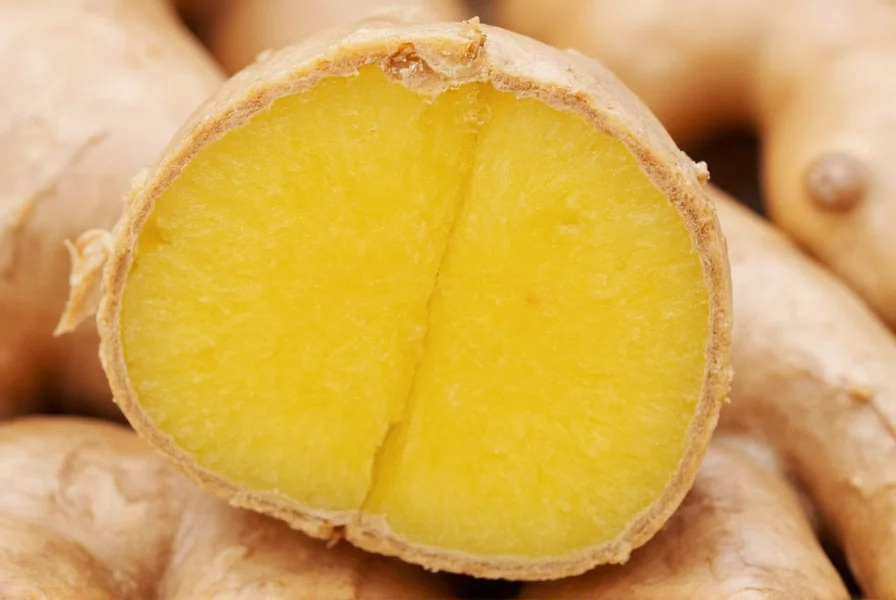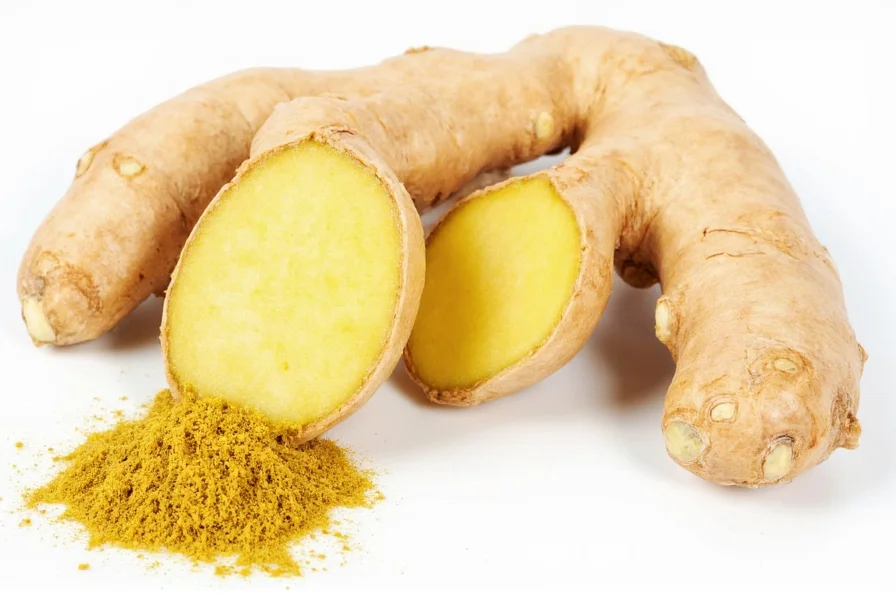Ginger isn't just a flavorful spice—it's a nutritional powerhouse with compounds that have been studied for their health-promoting properties. While it doesn't provide significant amounts of vitamins and minerals by volume due to typical consumption quantities, its bioactive compounds deliver substantial health benefits. Understanding the complete nutritional profile of fresh ginger root helps explain why this ancient remedy continues to be valued in modern nutrition science.
Nutritional Composition of Ginger
When examining ginger nutrient composition per 100g, raw ginger contains approximately 80 calories, 17.77g carbohydrates, 1.82g protein, 0.75g fat, and 2g dietary fiber. However, since most people consume ginger in smaller quantities, the nutritional impact comes primarily from its bioactive compounds rather than macronutrient content.
| Nutrient | Amount per 100g | % Daily Value |
|---|---|---|
| Calories | 80 kcal | 4% |
| Carbohydrates | 17.77g | 6% |
| Dietary Fiber | 2.0g | 7% |
| Vitamin C | 5mg | 8% |
| Magnesium | 43mg | 12% |
| Potassium | 415mg | 9% |
| Manganese | 0.229mg | 10% |
Key Bioactive Compounds in Ginger Root
The true nutritional value of ginger comes from its bioactive compounds, particularly gingerols. These compounds are responsible for ginger's characteristic flavor and most of its health benefits. When ginger is dried or cooked, gingerols transform into shogaols, which are even more potent.
6-gingerol is the most abundant and well-studied compound in fresh ginger. Research shows it possesses anti-inflammatory and antioxidant properties that may help reduce oxidative stress in the body. The concentration of gingerols varies based on growing conditions, harvest time, and storage methods.

Vitamins and Minerals in Ginger
While ginger doesn't provide large amounts of vitamins and minerals by volume, it contains several important micronutrients:
- Vitamin C: An antioxidant that supports immune function and skin health. One tablespoon of raw ginger provides about 0.3mg of vitamin C.
- Magnesium: Essential for hundreds of enzymatic reactions in the body. Ginger contains approximately 43mg per 100g.
- Potassium: Important for fluid balance and nerve function. Ginger provides about 415mg per 100g.
- Manganese: Crucial for bone health and metabolism. Ginger is particularly rich in manganese, providing about 10% of the daily value per 100g.
How Ginger Compares to Other Spices
When comparing the nutritional profile of fresh ginger root to other common spices, ginger stands out for its unique combination of bioactive compounds. Unlike turmeric (which contains curcumin) or garlic (with allicin), ginger's primary active components are gingerols.
Research published in the Journal of Agricultural and Food Chemistry shows that ginger has higher antioxidant capacity than many common spices when measured by ORAC (Oxygen Radical Absorbance Capacity) values. This contributes to its potential health benefits, particularly regarding inflammation reduction.
Health Benefits Linked to Ginger Nutrients
The specific combination of compounds in ginger contributes to several evidence-based health benefits:
Nausea relief is one of the most well-documented benefits of ginger nutritional facts and health benefits. Multiple studies, including a systematic review in Nutrition Reviews, confirm that ginger effectively reduces nausea from various causes including pregnancy, chemotherapy, and motion sickness.
Research also indicates that ginger's anti-inflammatory properties may help reduce muscle pain and soreness. A study in the Journal of Pain found that daily ginger consumption reduced exercise-induced muscle pain by 25%.
Maximizing Nutrient Absorption from Ginger
To get the most from ginger nutrient composition, consider these evidence-based tips:
- Use fresh ginger rather than powdered when possible, as fresh ginger contains higher levels of gingerols
- Combine ginger with black pepper to enhance absorption of its compounds
- Grate or chop ginger finely to increase surface area and release more active compounds
- Allow cooked ginger to sit for 5-10 minutes before consuming to maximize shogaol formation
Research suggests that consuming ginger with healthy fats may improve absorption of its fat-soluble compounds. Adding ginger to dishes with olive oil, avocado, or nuts could potentially enhance its bioavailability.
Scientific Research on Ginger Nutrients
A comprehensive review published in Antioxidants analyzed over 100 studies on ginger's bioactive compounds. The review concluded that gingerols demonstrate significant anti-inflammatory, antioxidant, and antiemetic properties.
Another study in the International Journal of Preventive Medicine examined ginger's effects on metabolic markers. Researchers found that regular ginger consumption (2g daily) improved several markers of metabolic health in participants with type 2 diabetes.
It's important to note that most studies use concentrated ginger extracts or relatively high doses (1-2g daily) to achieve measurable effects. The nutritional benefits of moderate culinary use are more subtle but still valuable as part of a balanced diet.
Frequently Asked Questions
How much ginger should I consume daily to benefit from its nutrients?
For general health benefits, consuming 1-1.5 grams of fresh ginger daily (about 1/2 to 1 teaspoon grated) provides sufficient bioactive compounds. Studies showing therapeutic effects typically use 1-2 grams daily, but consult with a healthcare provider before consuming larger amounts, especially if you have medical conditions or take medications.
Does cooking ginger destroy its beneficial nutrients?
Cooking transforms rather than destroys ginger's beneficial compounds. When heated, gingerols convert to shogaols, which are actually more potent antioxidants. While some vitamin C is reduced with cooking, the overall antioxidant capacity of ginger increases when cooked. For maximum benefits, allow cooked ginger to sit for 5-10 minutes before eating.
Is fresh ginger more nutritious than dried ginger?
Fresh and dried ginger offer different nutritional profiles. Fresh ginger contains higher levels of gingerols, while dried ginger has more shogaols due to the dehydration process. Both forms provide health benefits, but fresh ginger generally has higher overall antioxidant capacity. The choice depends on your specific health goals and culinary application.
Can ginger help with digestion and what nutrients are responsible?
Yes, ginger promotes digestion primarily through its gingerol compounds. These stimulate saliva, bile, and gastric enzyme production, which aids in breaking down food. Ginger also accelerates gastric emptying, which can relieve bloating and discomfort. The combination of bioactive compounds and fiber in ginger contributes to its digestive benefits.











 浙公网安备
33010002000092号
浙公网安备
33010002000092号 浙B2-20120091-4
浙B2-20120091-4